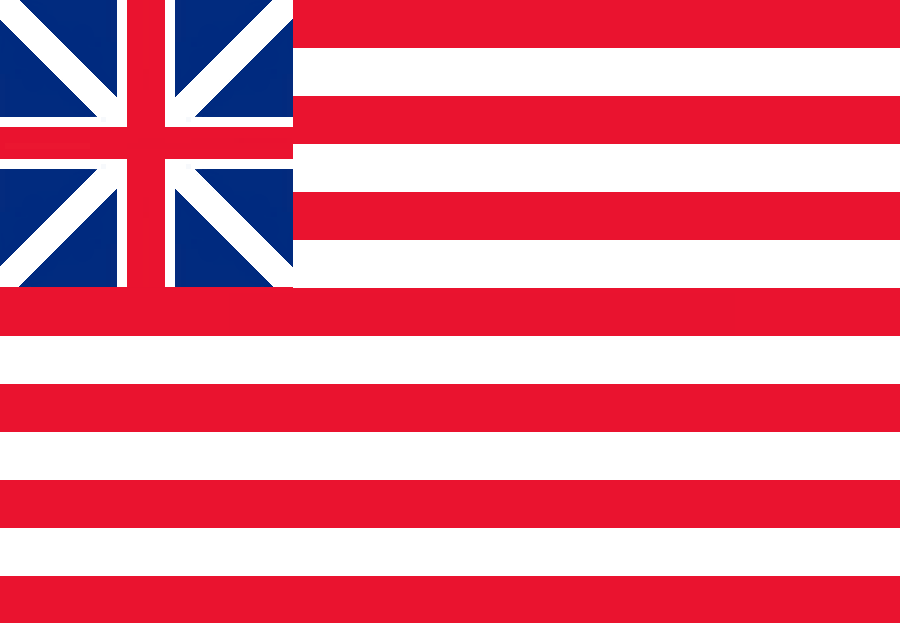


 The Continental Union flag which was flown on the Alfred in 1775, and the Andrew Doria in 1776, was one of the first flags employing the combination of the Rebel Stripes with the blue canton bearing the crosses of St. Andrew and St. George in what became known as the Union Jack. The combination was known specifically as the Continental Union and commonly as the Continental Colors.
The Continental Union flag which was flown on the Alfred in 1775, and the Andrew Doria in 1776, was one of the first flags employing the combination of the Rebel Stripes with the blue canton bearing the crosses of St. Andrew and St. George in what became known as the Union Jack. The combination was known specifically as the Continental Union and commonly as the Continental Colors.
 This flag was called the Continental Grand Union during the Nineteenth Century, but that name was not used during the American Revolutionary War period. This name was, apparently, suggested because the Union jack was also known as the Grand Union.
This flag was called the Continental Grand Union during the Nineteenth Century, but that name was not used during the American Revolutionary War period. This name was, apparently, suggested because the Union jack was also known as the Grand Union.
 The British Red Ensign, as noted on a previous page, had been in official use on vessels and land fortifications since Queen Anne proclaimed it as such in 1707. The transformation from a British standard to an American statement of unity required only that six white stripes be added to the field, in order to separate the solid red into thirteen stripes.
The British Red Ensign, as noted on a previous page, had been in official use on vessels and land fortifications since Queen Anne proclaimed it as such in 1707. The transformation from a British standard to an American statement of unity required only that six white stripes be added to the field, in order to separate the solid red into thirteen stripes.
 The red and white striped field with Union in the canton of this 'American' flag was not new, however. The flag of the British East Indies Company consisted of the same design, but with only nine stripes (five red and four white).
The red and white striped field with Union in the canton of this 'American' flag was not new, however. The flag of the British East Indies Company consisted of the same design, but with only nine stripes (five red and four white).
 The Pennsylvania Society of the Sons of the Revolution, in a publication reviewing American Revolutionary War flags from 1913, suggested that it should be remembered that this flag was created prior to the actual declaration that the colonies were to be free and independent states comprising a union. That would account for the British Union jack being retained in the canton of a flag possessing the Rebel Stripes. Many colonists, prior to the summer of 1776, hoped that the colonies and the mother country would be reconciled, albeit with the colonies being granted legislative recognition.
The Pennsylvania Society of the Sons of the Revolution, in a publication reviewing American Revolutionary War flags from 1913, suggested that it should be remembered that this flag was created prior to the actual declaration that the colonies were to be free and independent states comprising a union. That would account for the British Union jack being retained in the canton of a flag possessing the Rebel Stripes. Many colonists, prior to the summer of 1776, hoped that the colonies and the mother country would be reconciled, albeit with the colonies being granted legislative recognition.

